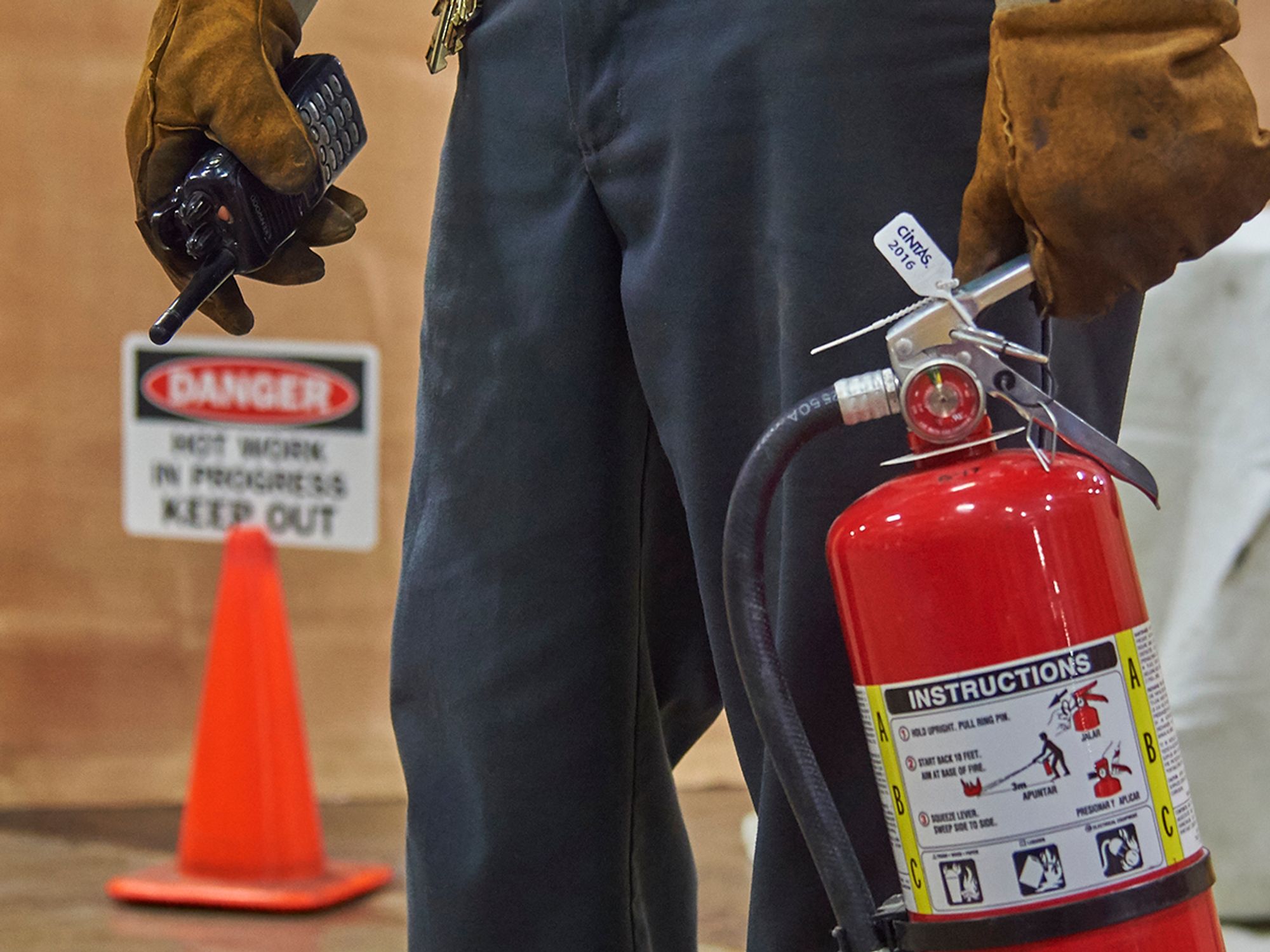InstituteEnglishSafety & HealthGeneral Industry SafetyFire Protection and PreventionFire Protection and PreventionAnalysisFocus AreaCompliance and Exceptions (Level 2)USA
Fire protection
['Fire Protection and Prevention']

To understand how to protect employees from fire, it may be a good idea to first understand what fire is. Fire can be represented by a simple equation:
| Fire = Fuel + Oxygen + Ignition + Chemical Reaction |
In order to burn and continue to burn, a fire requires the right combination of four basic elements:
- Ignition source: Open flames; lightning; smoking; cutting and welding; hot surfaces; frictional heat; static, electrical, and mechanical sparks; spontaneous ignition, including heat-producing chemical reactions; and radiant heat.
- Fuel: Combustible materials like wood, cloth, paper, rubber, and plastics and flammable liquids like gasoline, oil, grease, tar, oil-based paint, lacquer, and flammable gas.
- Oxygen: Oxygen is present in the air of nearly all industrial work situations.
- Chemical reaction: Combustion.
While all fires are made up of the same general elements, the specifics of each fire will differ, and the methods to fight these different fires will vary. Because of this, the NFPA has classified fires into five types:
- Class A: This type of fire is the most common. The combustible materials are wood, cloth, paper, rubber, and plastics.
- Class B: Flammable liquids, gases, and greases create class B fires.
- Class C: Class C fires are electrical fires, and a nonconducting agent must be used.
- Class D: Combustible metals, such as magnesium, titanium, zirconium and sodium fires are class D.
- Class K: Class K fires involve cooking appliances and combustible cooking media (vegetable or animal oils and fats).
